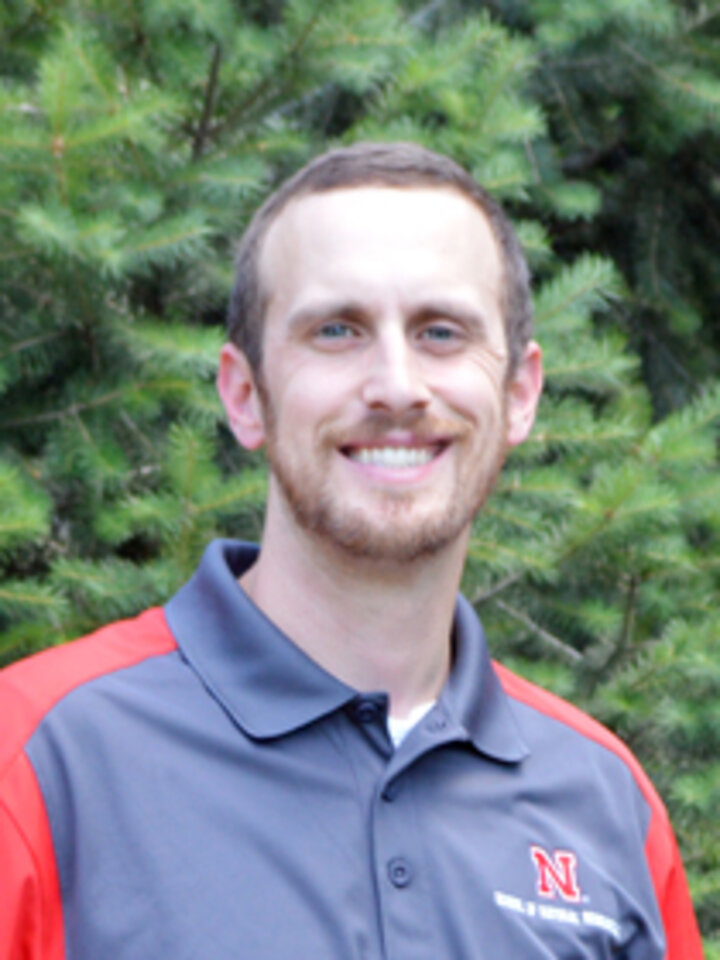Are too many deer grazing your corn? Are the bats in your belfry a problem or a pest management tool? Working at the confluence of sometimes competing interests – wildlife conservation and agricultural production – Andrew Little helps develop solutions.

A landscape habitat management extension specialist and research scientist, Little joined the School of Natural Resources in the university’s Institute of Agriculture and Natural Resources in July 2018.
Little recently shared the following about his education, work, and how growing up in a farming community in rural Pennsylvania led to a respect and passion for wildlife and natural resources as well as farming.
Developing a Passion for Resource Conservation
I received a B.S. in Wildlife and Fisheries Science from Pennsylvania State University in 2006, an M.S. in Wildlife Ecology from Mississippi State University in 2011, and a Ph.D. in Forest Resources from the University of Georgia in 2015.
I grew up near Gettysburg, Pennsylvania, in a small farming community. At a young age, I developed a strong passion for natural resource conservation. I spent many days afield with my father hunting and fishing, and learning about our natural world. My father was previously a Water Quality Specialist with the Pennsylvania Department of Environmental Protection agency, which is where I garnered an appreciation for our natural resources including the importance of water conservation and management.
During high school, I was active in 4-H and Future Farmers of America (FFA), which helped strengthen my passion for natural resource conservation, particularly from the agricultural perspective. In 2004, I was honored to receive one of the highest awards from the FFA organization, the American FFA degree, which is given to members who have demonstrated a high level of commitment to FFA and have made significant accomplishments in their supervised agricultural experiences.
I later attended Pennsylvania State University where I received my bachelor's degree in wildlife and fisheries sciences. After college, I worked for the Pennsylvania Cooperative Fish and Wildlife Research Unit as a forestry technician and at the Smithsonian Conservation and Research Center in Front Royal, Virginia as an ecology intern. I worked on a variety of research projects including evaluating the influence of land-use patterns on deer-vehicle collisions.
At Mississippi State University, my master's research combined my passion for natural resource conservation and deer hunting as I evaluated the behavioral responses of hunting pressure on deer behavior. After graduating I worked at Ducks Unlimited as a geographic information systems technician, working with engineers and biologists on programs such as the Conservation Easement Priority program.
In January 2012, I began my Ph.D. at the Warnell School of Forestry and Natural Resources at the University of Georgia where my research focused on evaluating Eastern wild turkey nest site selection and survival, female turkey habitat selection and survival in frequently burned longleaf pine savannas. After completing my doctorate, I became a post-doctoral research scientist and later a senior research associate at the University of Georgia where I served as university liaison between the Warnell School and the Georgia Department of Natural Resources Wildlife Resources.
Integrating Wildlife Conservation into Agricultural Production Systems
My goals here at UNL are to create innovative solutions to the growing wildlife conservation and management needs in a multi-functional Nebraska landscape where there are competing interests for agricultural production, wildlife conservation, and ecosystem services. I also address a variety of wildlife damage management questions including deer impacts on crops, foxes roaming your neighborhood, bats in your attic, etc. Please refer to our website wildlife.unl.edu/ for more information.
My research and extension program is currently focused in two areas:
- precision conservation; and
- wildlife management in intensively managed agricultural landscapes.
My interest in precision conservation (via precision agriculture technologies) stems from growing up in a farming community in Pennsylvania where I recognized early on the challenge of addressing competing interests for agricultural production and wildlife conservation. Unfortunately, there are no “silver bullets” to these complex challenges facing agricultural producers and natural resource conservationists. However, precision conservation does offer some interesting opportunities to create “win-win” solutions.
For example, using precision agriculture technology, we can spatially identify marginal (low yielding) and productive (high yielding) acres and then target specific areas for conservation program enrollments with the goal of maximizing whole-field profitability for producers while simultaneously reducing impacts such as fertilizer runoff and soil erosion to our natural resources. Marginal areas converted to perennial vegetation can not only reduce soil erosion and water runoff (for example, the Prairie STRIPS program in Iowa), but can have a positive impact on important wildlife species such as pheasants, song birds, pollinators, etc., especially in intensively managed agricultural landscapes.
If you’re interested in learning more about my research and extension program, please feel free to contact me (alittle6@unl.edu) or visit my website, the Applied Wildlife Spatial Ecology Lab.
